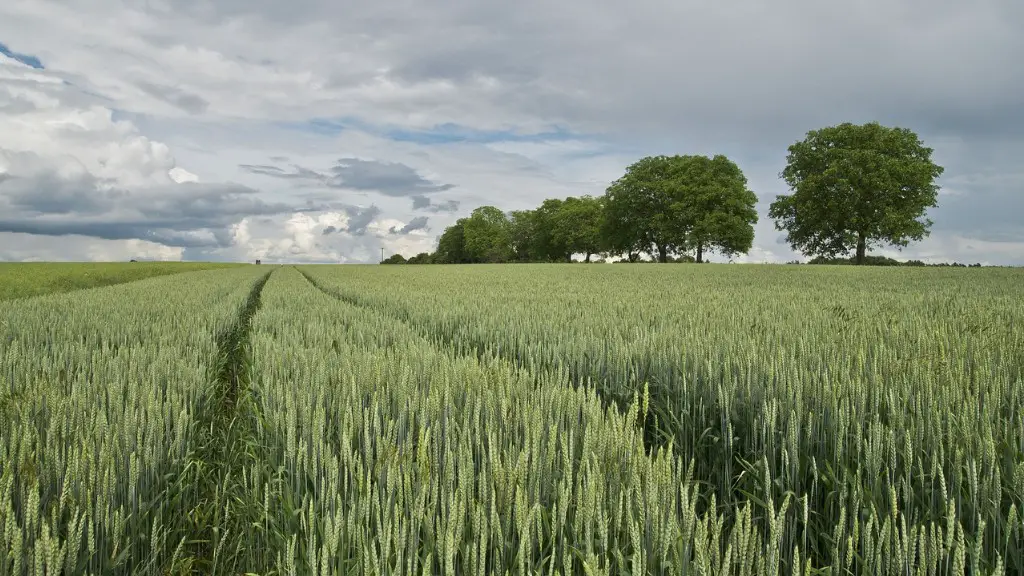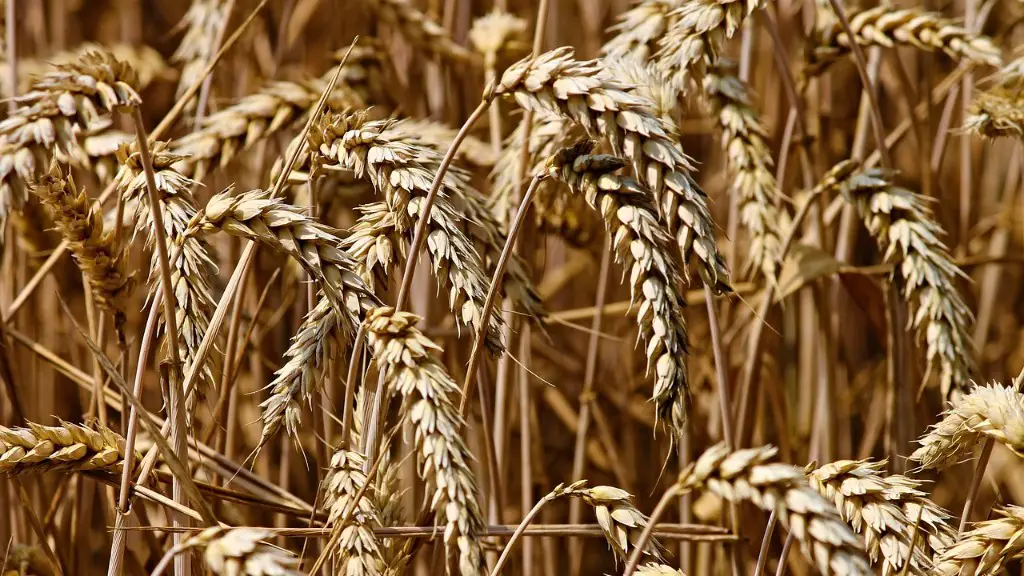Ridge tillage is an agricultural technique used to conserve water and soils, and reduce the amount of time and fuel required for field cultivation. It is an effective way to reduce costly erosion on agricultural lands, and can increase crop yields as well. Ridge tillage involves creating shallow ridges in the soil, typically around 20-30 cm in height, that are then planted down the slope of the ridges. The ridges create furrows that can help catch and direct water towards the crop’s roots. Water-saturated soils erode more quickly, and the ridges help reduce erosion by trapping the soil and water, making it more efficient for plants to absorb water. Ridges also help reduce fuel costs associated with field cultivation, as they can be pushed and cultivated with lighter equipment, such as an ATV or small tractor.
Benefits of Ridge Tillage
Ridge tillage has many benefits, as it works to protect soils, reduce costs, and promote healthier crops. It reduces soil disturbance, which can reduce soil compaction, improve air and water movement in the soil, and increase microbial activity, organic matter content, and biological diversity. This can lead to higher yields and a greater root mass, and increase the soil’s water-holding capacity. Ridge tillage also decreases nutrient losses, as the furrows help redirect surface water from running off, allowing the water to evaporate slower. Since water is diverted away from growing crops, there is less opportunity for toxic herbicides, fertilizers, and pest control products to enter the soil.
Limitations of Ridge Tillage
Although ridge tillage has many benefits, it also has some limitations that should be considered. First, it requires more equipment, as the ridges must be created and then the crops planted down the ridge. It also requires a higher level of technical competence, as the ridges must be shaped to the terrain to ensure water penetration and root growth. Additionally, ridge tillage may not be suitable in areas where land is sectioned off into small fields, as it can be difficult to work the ridges around existing structures. Finally, the use of ridge tillage can alter the soil structure and reduce soil fertility levels, which may require amendments to ensure enough nutrients are available for optimal crop growth.
Methods of Ridge Tillage
Ridge tillage is done by mechanically shaping the soil into shallow furrows. These furrows should be around 20-30 cm in height and planted down the slope of the ridges. They can be wholly or partially cultivated with minimal soil disruption. Additionally, the ridges can be made with a variety of ridge tillage tools, such as moldboard plows, chisels, or even disc harrows. If a large amount of land needs to be worked, there are also tools that can be towed behind tractors or ATVs to create a more efficient tillage process.
Alternatives to Ridge Tillage
Ridge tillage is not the only way to conserve soils, reduce erosion, and increase crop yields. Alternatives include no-till, mulching, and strip-cropping. No-till involves leaving the soil undisturbed, allowing plants to be planted directly in the existing soil without disturbing its structure. Mulching is another conservation method, where a layer of organic material is laid over the soil. This helps to prevent soil erosion and reduces the amount of water that evaporates from the soil. Strip-cropping also helps reduce soil erosion, as it involves planting alternating strips of groundcovers and crops. This breaks up the soil, allowing water to penetrate the underground layers.
Nutrient Cycling and Weed Control with Ridge Tillage
Ridge tillage can also be used to reduce weed infestations, as crests and valleys created by the ridges can help impeded weed germination. Additionally, it can help promote nutrient cycling, as the ridges allow for deeper nutrient absorption by the crop’s root system. This helps to supply organic material to the soils, as well as essential nutrients that help promote healthy plant growth. Lastly, ridge tillage can help manage water runoff, as the ridges break the surface tension of the water, allowing it to penetrate the soil surface more readily and infiltrate deeper into the soils.
Economic Benefits of Ridge Tillage
Other benefits of ridge tillage relate to its economic impact. Ridge tillage reduces labor costs, as it can be done relatively quickly with few people and requires little fuel. It also helps reduce erosion-related losses and helps ensure that water resources are being used optimally. Furthermore, it can increase crop yields and enhance crop quality, thus helping to increase the farmer’s bottom line. And finally, ridge tillage can reduce or eliminate the need for expensive field maintenance and equipment costs.
Health Benefits of Ridge Tillage
Ridge tillage can also benefit human health. Healthy soils can support healthy crops and help ensure that the resulting produce is free of potentially harmful toxins and contaminants. Additionally, ridge tillage reduces the amount of dust and debris in the air, which can help reduce the risk of breathing-related illnesses in humans and animals alike. Lastly, ridges can help reduce the spread of vectors, such as mosquitoes, by creating shallow furrows that can act as a physical barrier between farms and rivers. This can help reduce the risk of a potential malaria outbreak.

